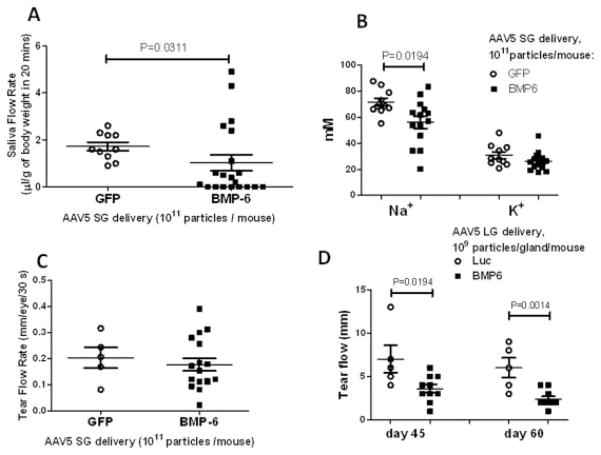Figure 2.
Salivary and lacrimal gland function in mice treated with adeno-associated virus type 5 encoding bone morphogenetic protein 6 (AAV5-Bmp6) and AAV5 encoding green fluorescent protein (AAV-GFP) (control). Saliva and tear flow and ion concentration were measured as described in Materials and Methods. A, Mice cannulated with AAV5-Bmp6 vector (n = 20) exhibited a significant decrease in salivary flow rate compared with control mice (n = 10). B, The level of sodium was significantly decreased in saliva from mice cannulated with AAV5-Bmp6 vector (n = 14) compared with control mice (n = 10). The potassium level was also decreased in the AAV5-Bmp6–treated mice, but the difference from controls was not statistically significant. C, Delivery of vector into the salivary gland (SG) did not result in a systemic effect, as determined by a lack of change (P = 0.5308) in lacrimal gland (LG) tear flow rate (n = 5 in the AAV5-GFP–treated group, n = 17 in the AAV5-Bmp6–treated group). D, Delivery of AAV5-Bmp6 (n = 10) to the lacrimal gland reduced the tear flow rate compared with that in control mice administered AAV5-luciferase (Luc) (n = 5). Bars show the mean ± SEM. P values were determined by Mann-Whitney U test (A and D) or by Student’s unpaired t-test (B and C).

